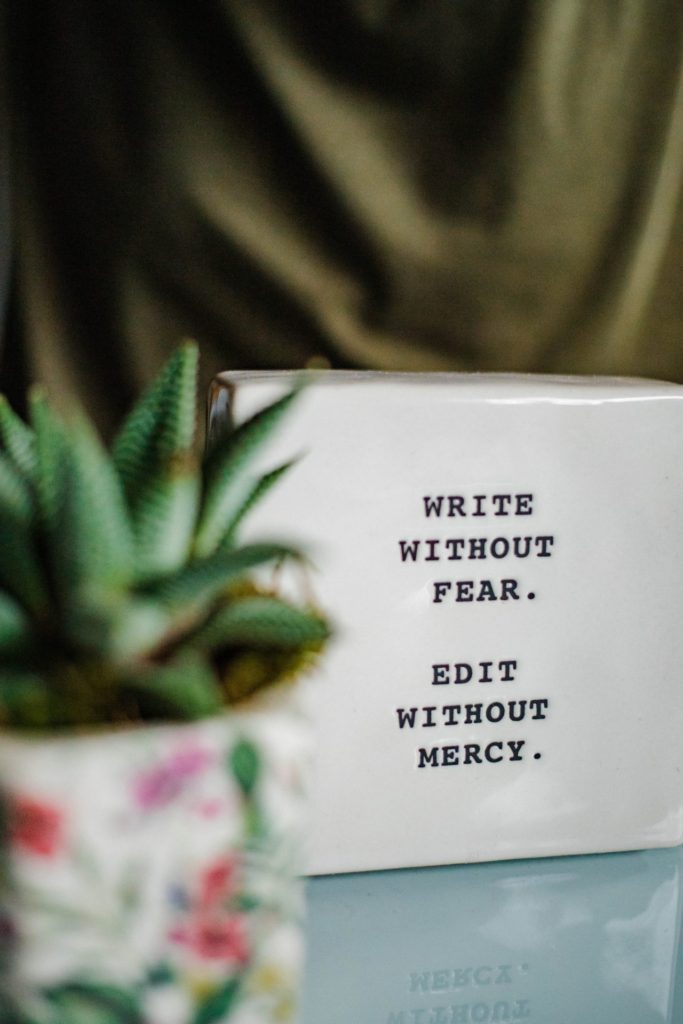It’s been a couple of months since you’ve ventured out of your comfort zone to start your very own blog. The question remains: how does one create a blog that actually gains traction? You’ve Googled extensively and read numerous articles about how exactly to start your own blog. Your website looks good, you’re writing ahead of time and you’re putting the word out on social media platforms.
And yet, traffic to your site remains miserably low.
Why? (And how frustrating that is!)
Well, there could be a number of reasons why traffic remains low.
While we won’t have the definitive answers for you here, there are a few things that could be valuable for you to consider and explore.
There’s nothing to lose, right?
SPELLING AND GRAMMAR

Alright, so you’re not writing a novel. And you’re not doing this to earn your English (or whatever language you speak / write) degree. So you can be as casual as you like, right? After all, who cares about spelling and grammar on the internet?
Well, yes and no.
It’s accepted that when you write for your own personal blog, that you’re definitely able to take spelling and grammatical liberties – perhaps for emphasis.
Here’s an example.
“I ate waaaay too much cake at the party.”
Of course, that’s not the way ‘way’ is spelt, but in order to put emphasis on it and make it more personal, you could get away with writing it like this.
That being said, this should only be done for emphasis and only occasionally. This should not become the norm for your writing.
Believe it or not, even though people are reading articles and blogposts online, they still expect that some effort has gone into the writing of it.
Here are 5 things you should do before publishing your blog:
- Read and re-read your post.
- Edit. Fix any errors that you might pick up along the way. If the sentence doesn’t feel right or read well, change it.
- Send it off to someone else to read and to give you feedback – not only on spelling and grammar, but also on the general feel / tone of the post.
- Read the feedback objectively (no need to take anything personally!) and implement changes as you see fit.
- And then make your post live.
DO YOU KNOW YOUR STYLE OF WRITING?

This can be tricky. You are clearly taking your blogging seriously, to have gone through all the trouble of getting to this point.
But just because you’re taking things seriously (and rightly so!), doesn’t mean that your blog has to be serious. Unless, of course, your subject matter of choice is a serious one – then please go ahead.
What I mean is that, while you’re being professional about the whole thing, you still have to be yourself. Your ‘voice’ still needs to shine through.
Don’t go Googling or Thesaurus-ing words that sound better, or more sophisticated, than the one you had initially written down.
If you want to blog about the meal you had at that fancy restaurant, the word ‘fancy’ will do just fine. No need to go the ‘ostentatious’ route. After all, you don’t want your readers to be diving for their dictionary apps on every third word.
Which brings me to my next, and very important, point.
KNOW. YOUR. AUDIENCE.
Who do you picture reading these blog posts of yours? Who are you writing them for?
For example, if you’re blogging about your journey as an orthopaedic registrar (like you’d even have the time!), then of course, you’re going to use the word ‘olecranon’ instead of elbow, because your audience would very likely be people in, associated with, or interested in the medical field.
Similarly, if you’re blogging about your journey as a pro-skateboarder, you’re going to tell your readers (who are likely other skateboard enthusiasts) that on your last fall you busted your elbow, not your olecranon. (P.S. I’m not hating on skateboarders. This is just an example.)
But, do you see what I’m saying?
When you know who you are writing for, the style will come naturally.
And whatever that style is, make sure you make it interesting! Trust me, you can make any topic sound interesting.
USING KEYWORDS FOR SEO
Another reason, of course, is that your blogposts are not visible enough on the internet. Research has shown that almost 95% of all web users don’t scroll past that first Google page. Don’t deny it. We’ve all stopped at the end of the first page at some point or another.
But, if your blogpost is, say, on page 12 – then how will anyone see it?
Experts say that you need to be using relevant keywords for search engine optimization or SEO.
Now, the topic of keywords is a whole other kettle of fish. It’s one of those subjects which make my eyes glaze over and yet, according to people in the know, if you’re not using the correct trending keywords, chances of your post appearing on page 1 are slim to none.
While I can’t give you all the SEO answers, why not pop over to Neil Patel’s site. He may be able to teach you a thing or two.
VISUALS

And last (on this list, in any case) but definitely not least – your graphics. Yes, blogposts are as much about the words as they are about the visuals. Forget about not judging a book by its cover. Pictures on a blogpost complement the content.
So, make sure that the pictures you are using for your blog are:
1. High-resolution / high-quality:
In other words, it looks great when enlarged or as a thumbnail. Grainy pictures will simply not do.
2. Royalty-free:
Make sure that you actually have permission to use the pictures. If not, you could be infringing on copyright.
3. Eye-catching:
Yes, some blogposts do call for darker pictures (in the colour sense), but whether they’re dark or bright, make sure that they’re striking.
4. Appropriate:
Of course you’ll be posting pictures relating to your post. However, make sure that all pictures used are tasteful as well. An off-putting cover picture could stop someone from reading your post altogether.
5. Credits:
Those pictures we spoke about – also make sure that you are crediting the owner of the photo. It’s the least you can do.
***
Remember, if your desire is to really and truly have your own blog, but you basically just suck at anything related to it – you can always outsource various tasks.
There are freelancers in all aspects of business. From web designers to ghost writers and editors. There are always ways around any problem.
So, there you have it. Do an audit of your own blogging practice and see if any of these could potentially be holding you back.
To many more years of happy blogging!



